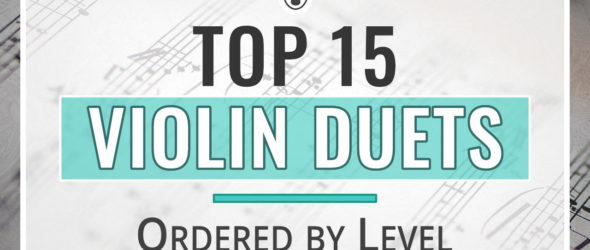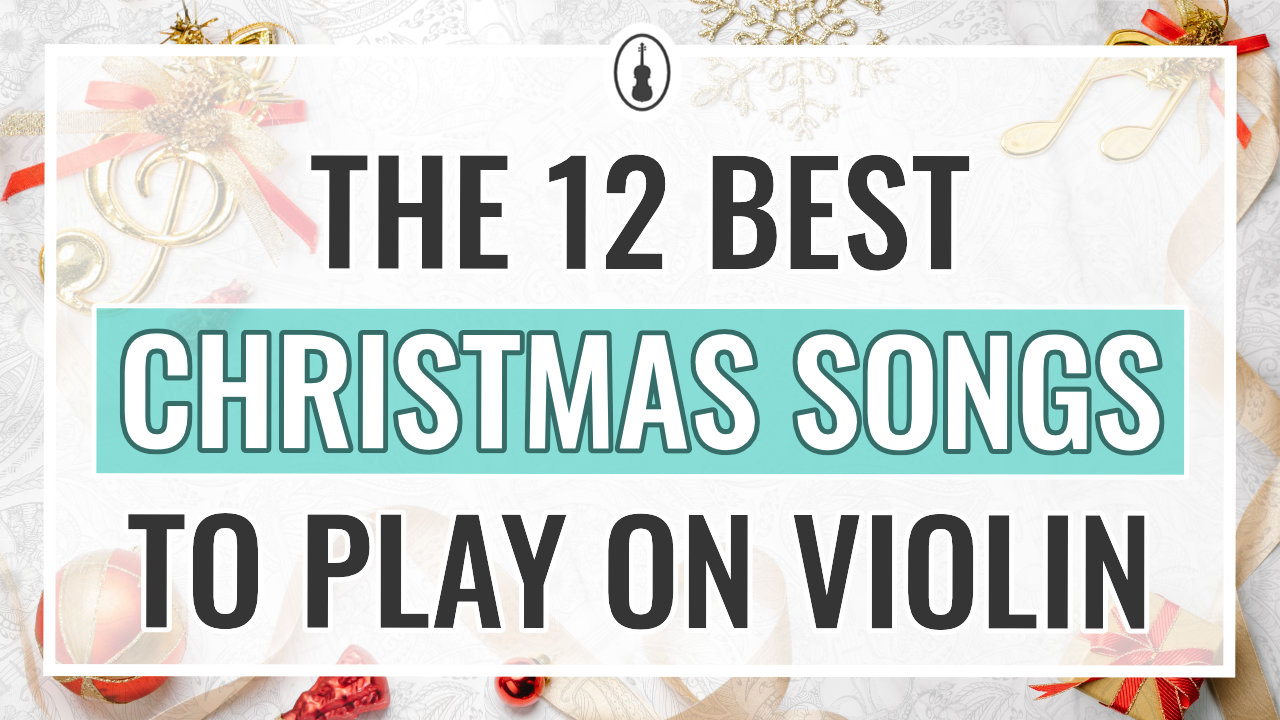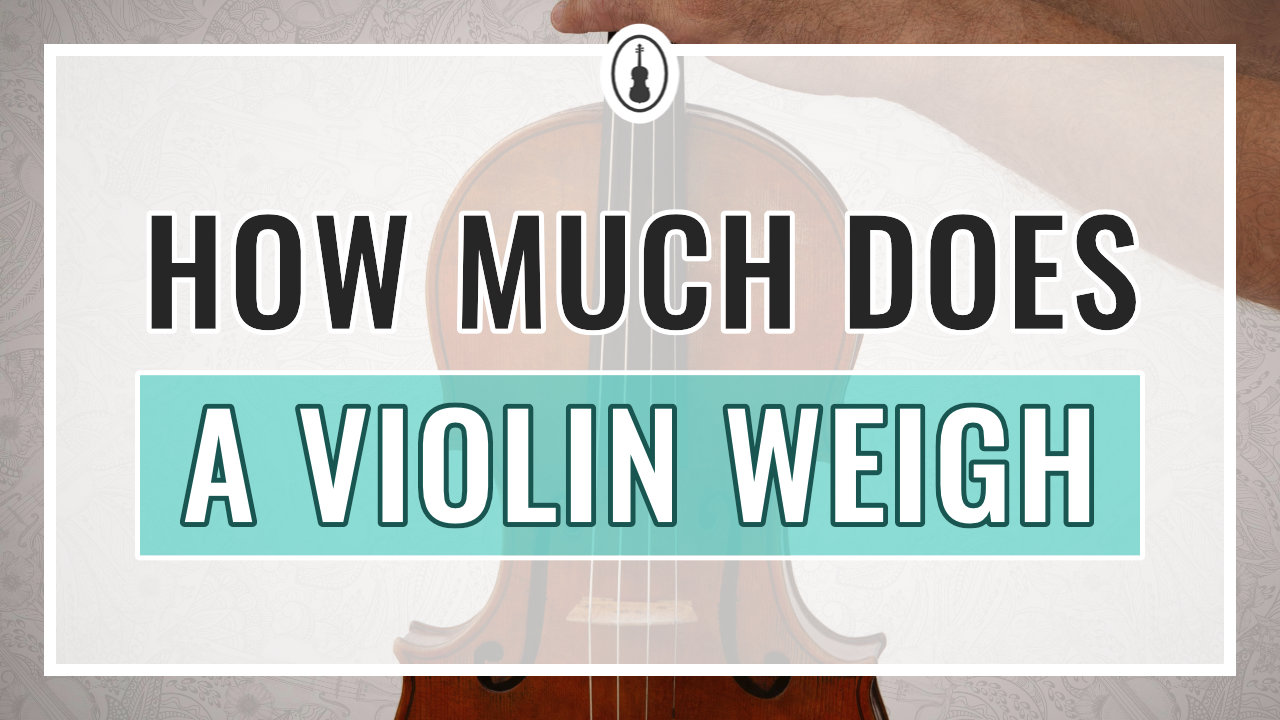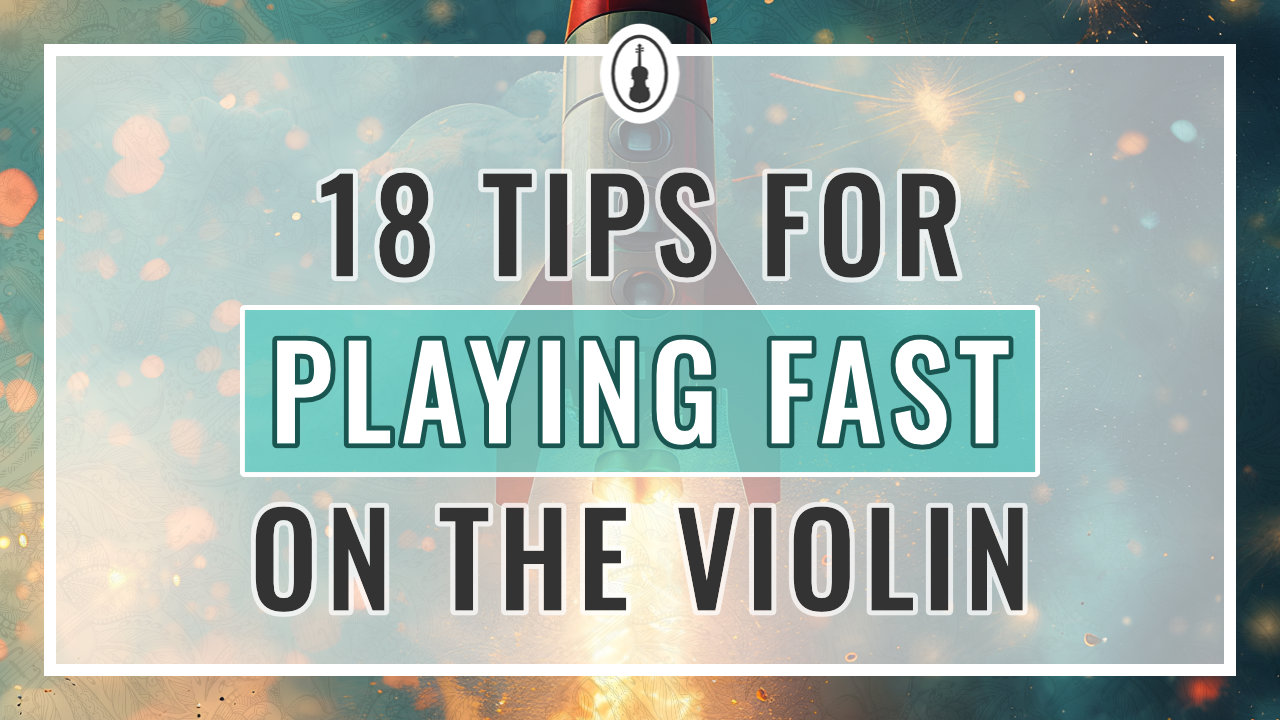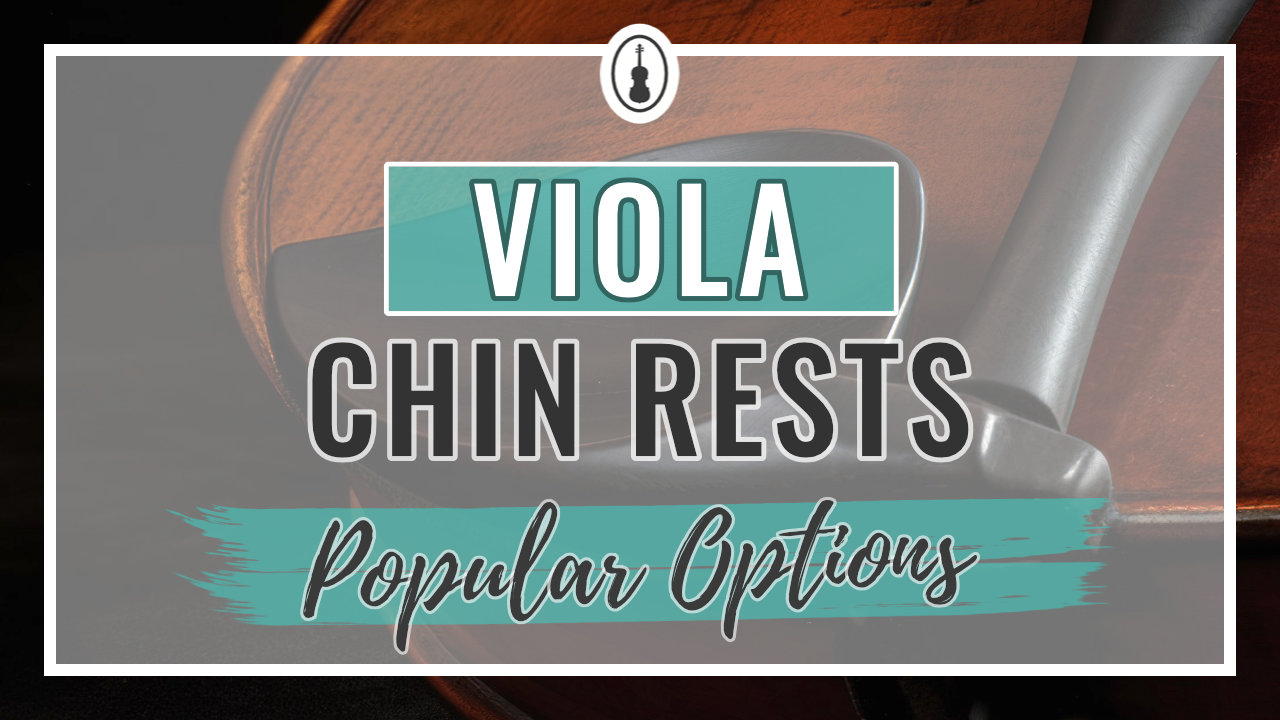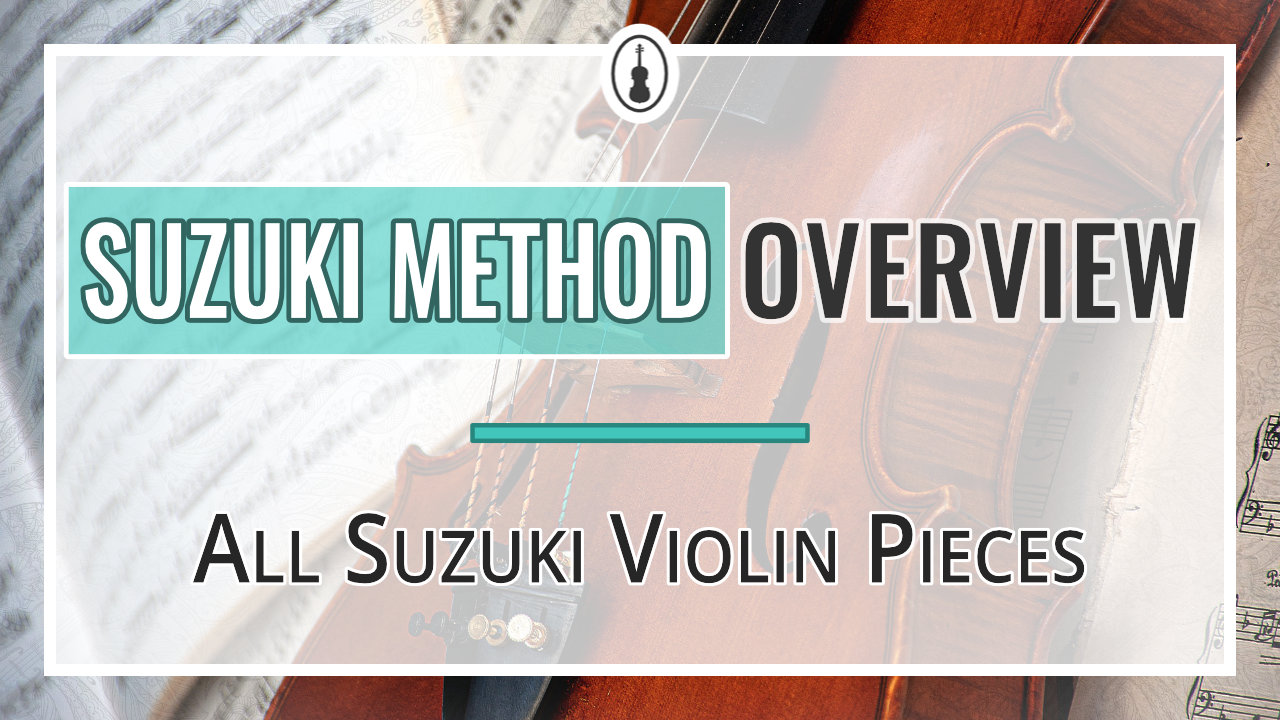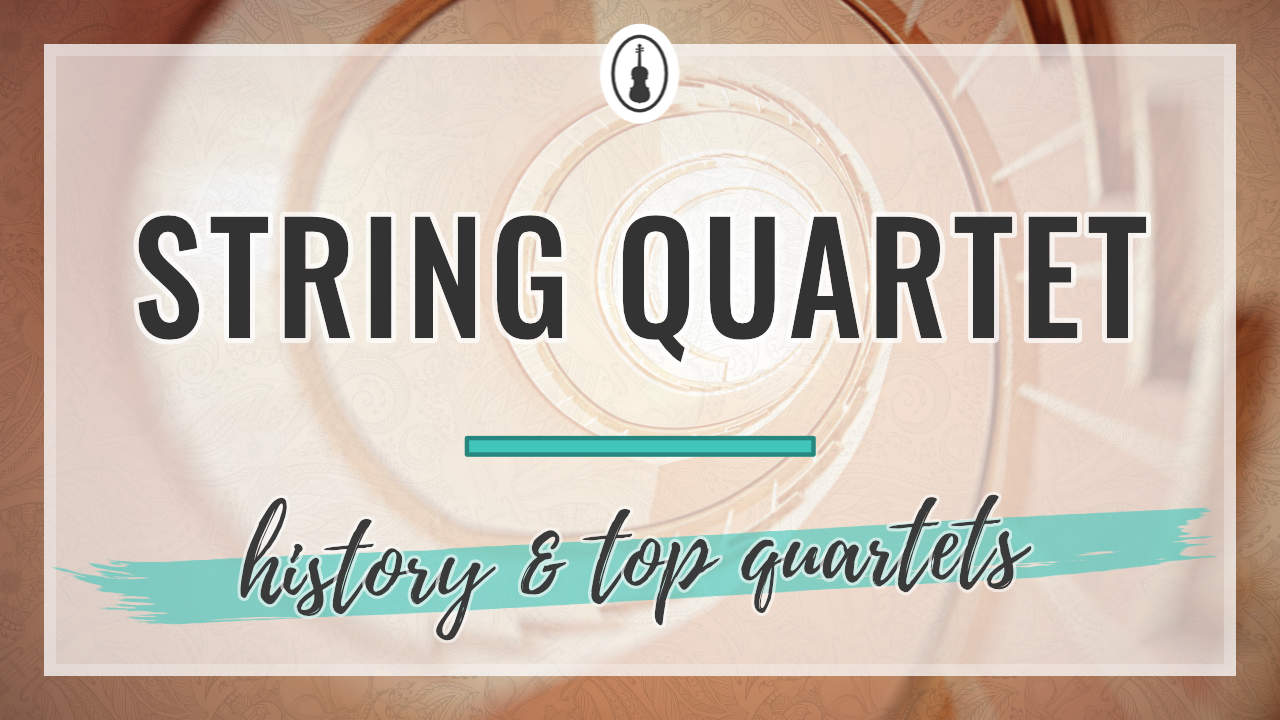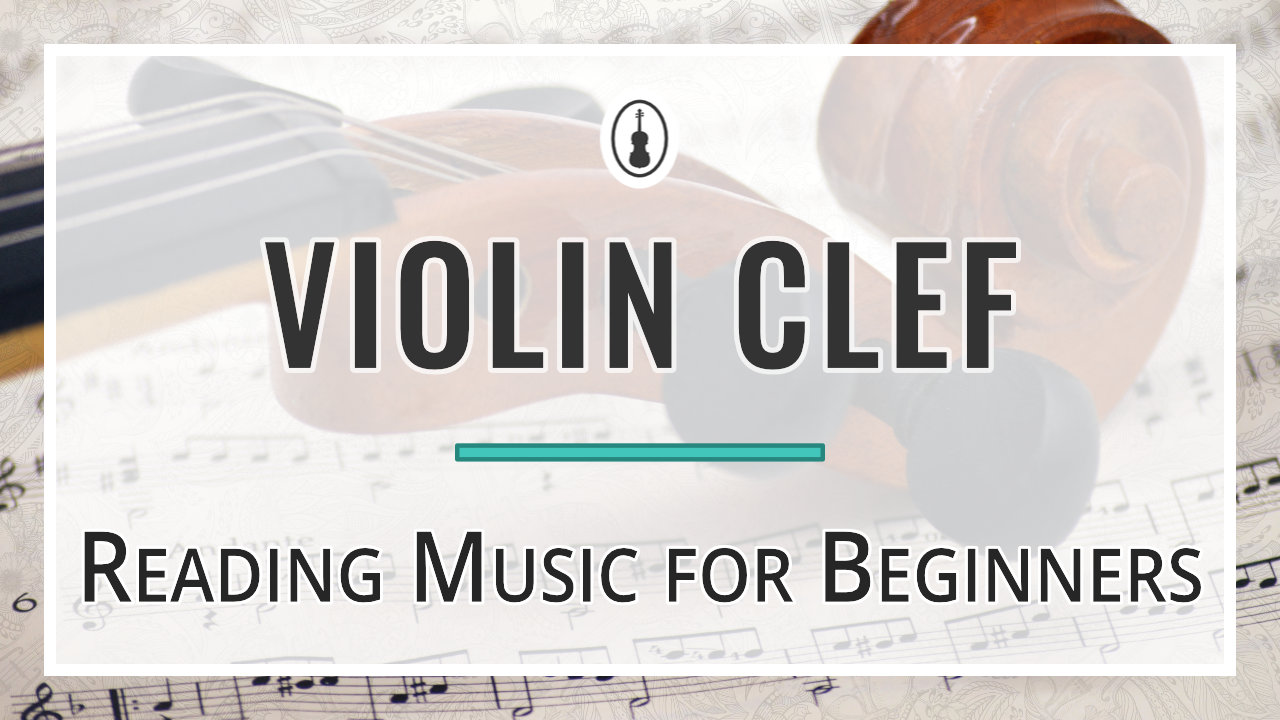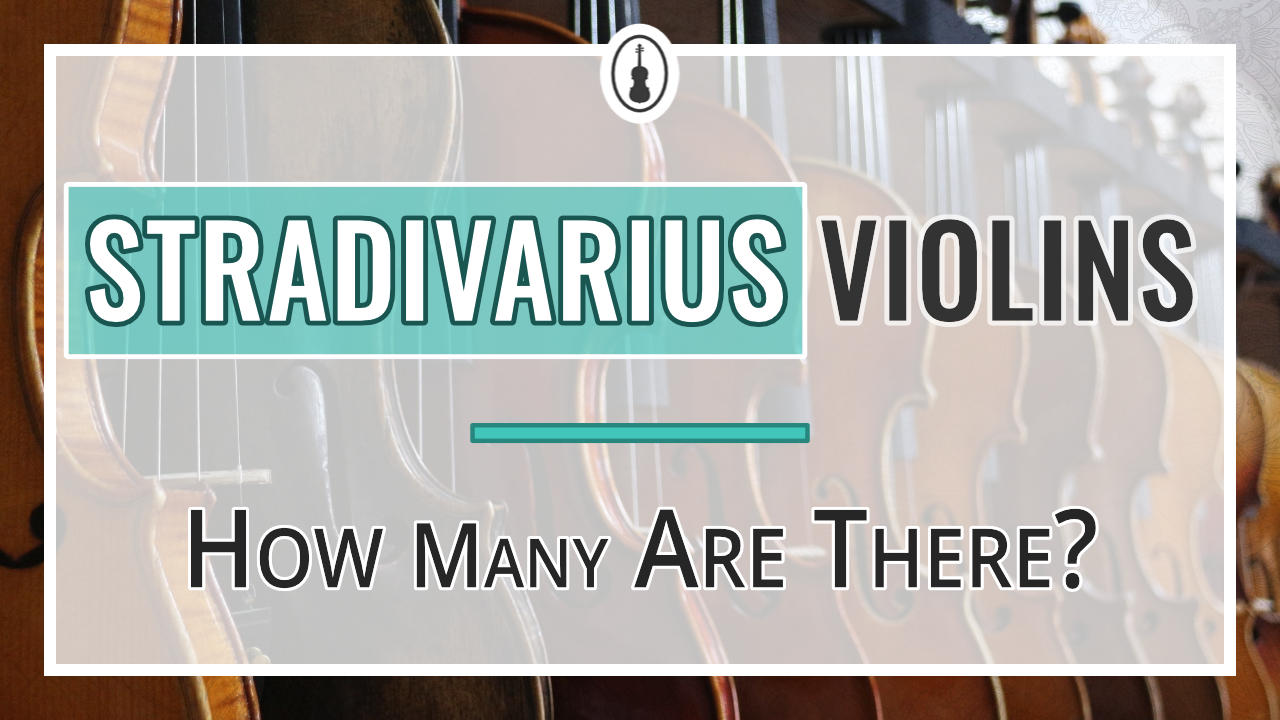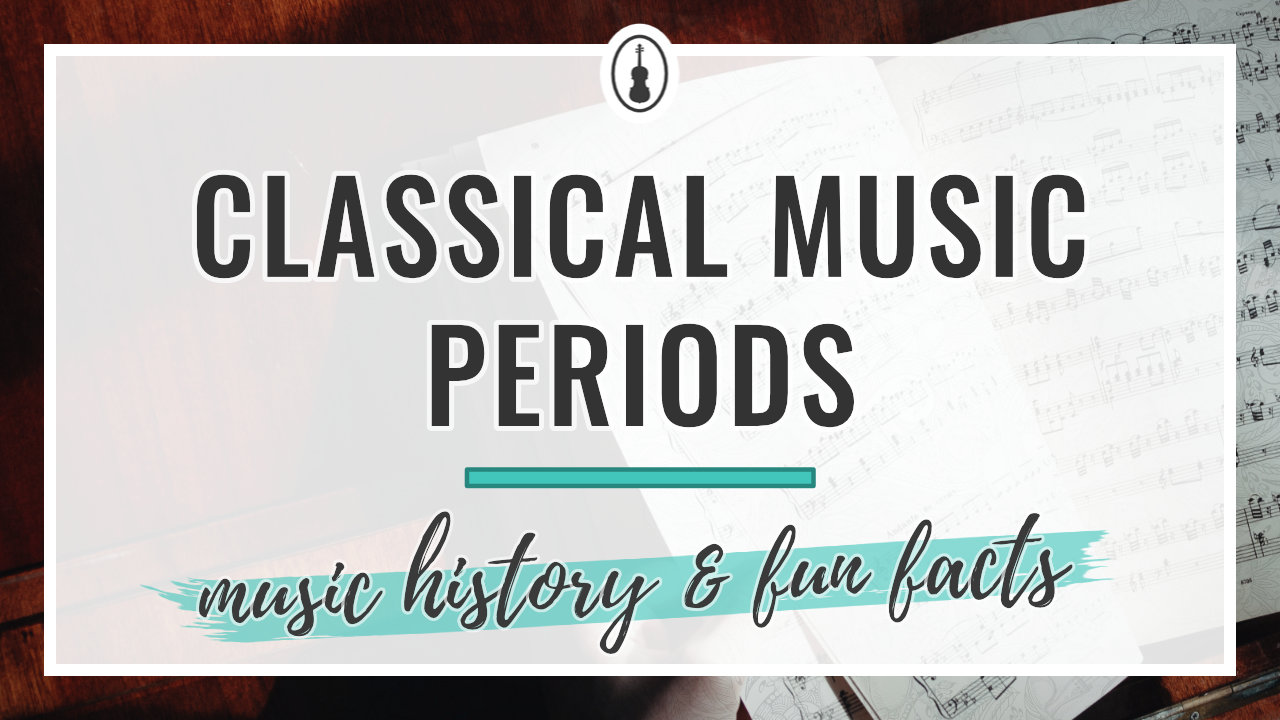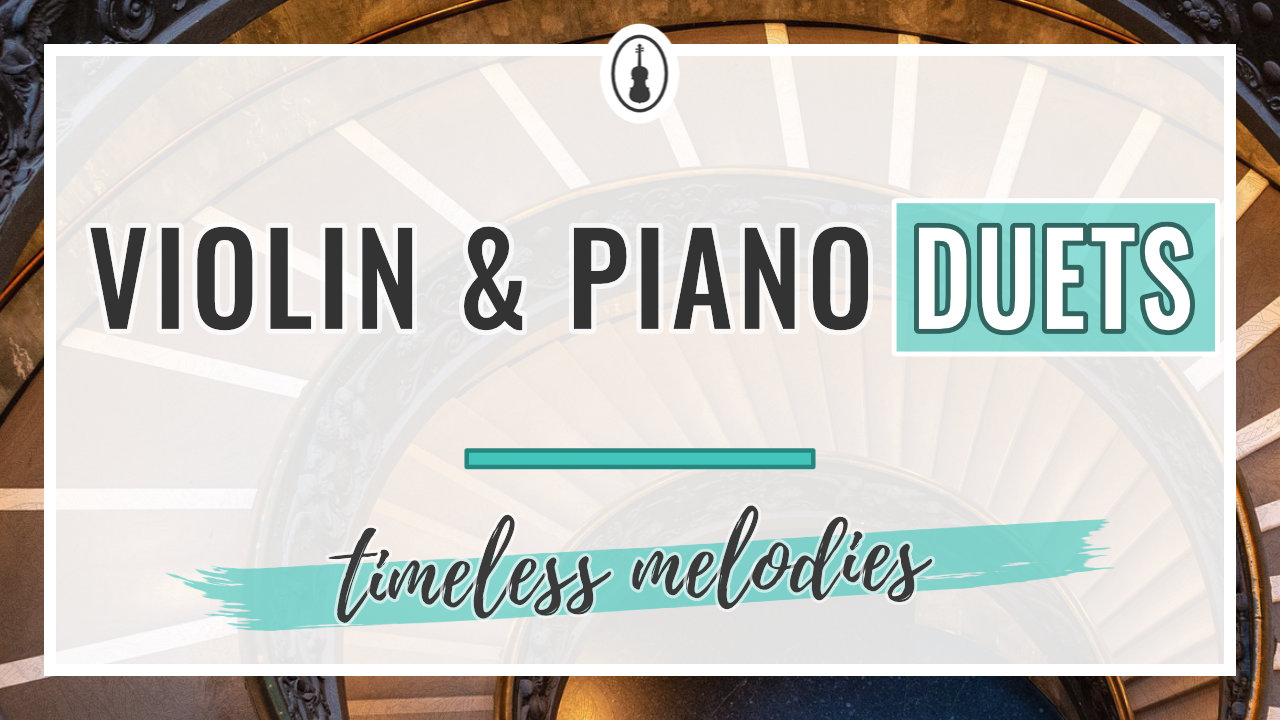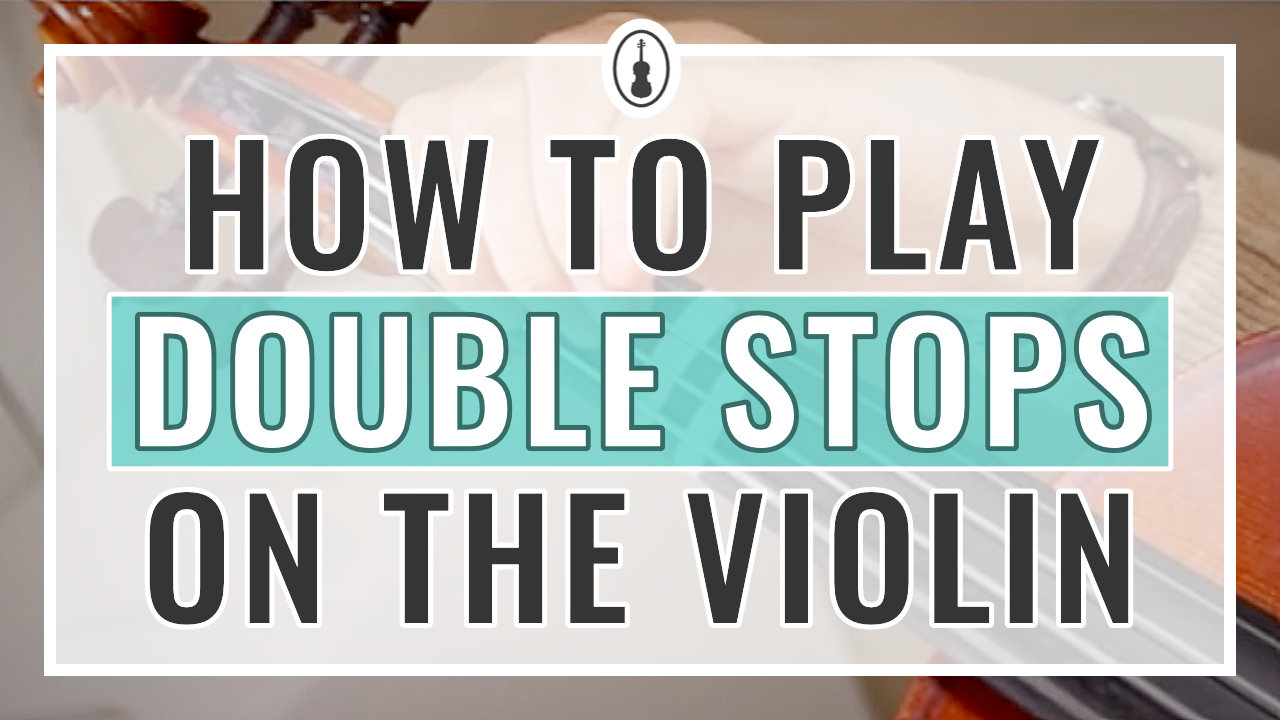Playing violin duets with other musicians is a fun way to practice chamber music skills! Making music with friends can be very rewarding, and builds important listening and communication skills.
Practicing alone can feel lonely and isolating, and music is always more fun with other people. Find a violin friend and play duets together! Today’s list of violin duos goes from easy to advanced, so no matter what level you’re playing at, there’s something here for you.
The duets I’ve chosen are a mixture of Baroque, Classical, Romantic, 20th Century, and Jazz. There’s really something here for everyone! A few of the duets are arranged for different instrument combinations, so if you have a friend who plays something else, you can still play together.
Easy Violin Duets for Beginners
If you’re new to playing the violin, or just want to start with something easy, here are five great duos to learn with another musician.
Tunes for Two – 30 Very Easy Duets for Violin
This set of violin duos is well suited for early-stage beginners. If you started to play only few months ago, you can already try to play those pieces.
In this book, you will find tunes from around the world. They get harder as you go, but both parts are at the same level and all pieces are in the first position.
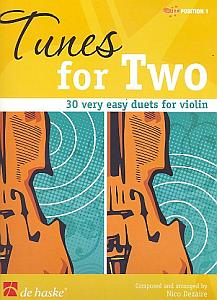
Tunes for Two
30 very easy duets for violin
Support us for more FREE content No extra costs for you Recommended by Violinists
Suzuki – Duets for Violins
Suzuki Duets for Violins are perfect if you’re learning from the Suzuki violin books. This compilation covers the first three violin books. Find a friend at the same level, and have fun playing your repertoire together!
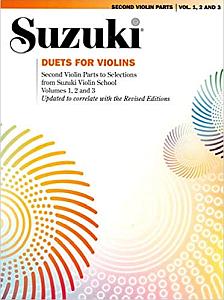
Suzuki – Duets for Violins
Support us for more FREE content No extra costs for you Recommended by Violinists
The duet book only includes the second violin part, so the person playing the top part will need their own Suzuki book.
David McKeown – 11 Easy Jazz Duets for Violin
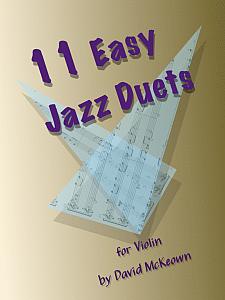
David McKeown – 11 Easy Jazz Duets for Violin
Support us for more FREE content No extra costs for you Recommended by Violinists
If you love jazz and want to start exploring that world on your violin, these duets are a great place to start! Each movement is in a different style, from swing to rock to jazz waltz.
Geared towards beginners, both parts stay entirely in the first position. The tricky thing about these duets is the swung jazz rhythms. But if you listen to a lot of jazz, the rhythms shouldn’t be too hard to pick up.
George Frideric Handel – Nine Easy Duets for Two Violins
This collection of violin duets by Baroque composer George Frideric Handel includes nine short dance movements, similar to Mozart’s 12 Easy Duets which you will find in the intermediate section.
While the music isn’t too intricate, the top line does include trills and leaves the first position for short periods of time. For that reason, this duet is great for higher-level violinists who have recently started shifting and would like to practice that.
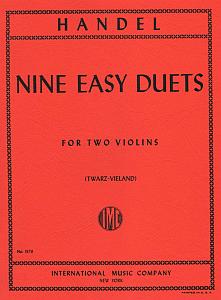
Handel – Nine Easy Duets for Two Violins
Support us for more FREE content No extra costs for you Recommended by Violinists
F. Mazas – Twelve Little Duets for Two Violins Op. 38, No.1
The first movement from Mazas Twelve Little Duets is well suited to the beginner violinist. For more of a challenge, take a look at the other 11 movements!
The first duet includes some double stops in the second violin part, but most double stops include an open string. There are some grace notes throughout, and the two violin parts are about equally difficult.
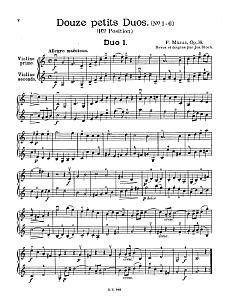
Mazas – Twelve Little Duets for Two Violins (No.1)
Wolfgang Amadeus Mozart – 12 Easy Duets, K. 487
Mozart’s “Easy Duets” have been arranged for many different instruments, including two violins. Two other popular arrangements of K. 487 are violin and viola, and violin and cello. These short dance movements are fun to play and are simple to put together.
Both duet parts are at the same difficulty level, which includes shifting between positions, so you and your duet partner can have some fun trading off who plays what part. This piece includes sixteenth note rhythms, and each movement has a different key signature.
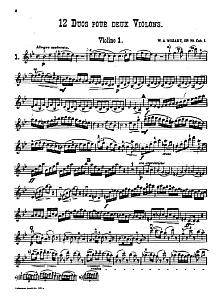
Mozart – 12 Easy Duets
Dmitri Shostakovich – 5 Pieces for 2 Violins and Piano
While the five pieces are lighter than most of Shostakovich’s angsty Soviet-era music, this work shouldn’t be overlooked. The collection of music was gathered from his Ballet Suites and some movie music.
Neither violin part goes too high in the range, and the second violin part is a little easier than the first. This is a great piece to learn to become more comfortable shifting to the third position! Playing with another violinist and pianist is a great way to gain experience playing chamber music.
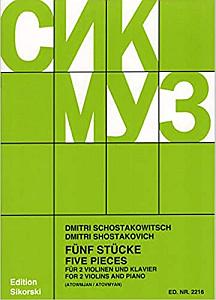
Shostakovich – 5 Pieces for 2 Violins and Piano
Support us for more FREE content No extra costs for you Recommended by Violinists
Béla Bartók – 44 Duos for Two Violins, Sz. 98
Bartók’s 44 Duos are a great introduction to twentieth-century music. The duos begin simply, but become difficult by the end. A few movements include polytonality–each person plays in a different key!
These short duos are based on Hungarian folk songs, like a lot of Bartók’s other music. He wrote these for students to learn how to play together, and not necessarily for performing.
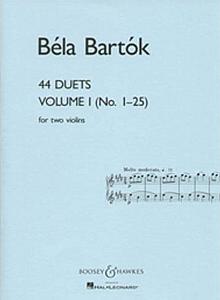
Bartók – 44 Duos for Two Violins – Book 1
Support us for more FREE content No extra costs for you Recommended by Violinists
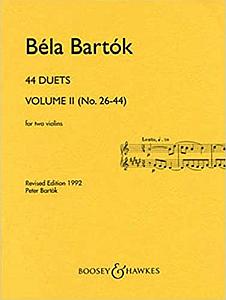
Bartók – 44 Duos for Two Violins – Book 2
Support us for more FREE content No extra costs for you Recommended by Violinists
J.S. Bach – Concerto for 2 Violins in D Minor, BWV 1043
The Bach “Double Concerto” is a great, popular piece to learn on violin. It’s even included in the fourth Suzuki violin book!
Both violin parts are equally important–each acts as a soloist, with their melodies weaving in and out of one another. The orchestra provides a light accompaniment underneath. If you’re lucky enough to play this concerto with an orchestra, you’ll find that it lays a beautiful foundation!
The Double Concerto contains difficult rhythms, harmonies, and technique, and the first violin part does go quite high in the range. This is a well-known Classical piece, so the theme may sound familiar—this always helps when learning new music!
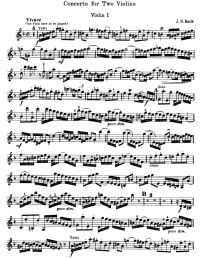
Bach – Concerto for 2 Violins in D Minor
F. Mazas – 6 Duets for Two Violins, Op. 39
Six Duets, Op. 39, written by French violinist and composer Jacques Féréol Mazas, is a fun piece to play with different articulations.
Both violin parts are difficult but fun. Dynamic changes and spiccato make the music sound very lively and enjoyable.
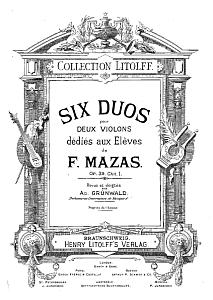
Mazas – 6 Duets for Two Violins
Luigi Boccherini – Duets for Two Violins, G. 63-68
These duets are really beautiful pieces of Classical music. The two violin parts intertwine and sound like one. This is great for learning how to really communicate with a duet partner, and how to match the tone.
This duet includes difficult double stops, 32nd notes, and some difficult key signatures. Neither part plays extremely high, but both violin parts are equally difficult.

Boccherini – Duets for Two Violins
Violin Duets for Advanced Violinists
For violinists who have been playing for a long time and are looking for a challenge, the duets below will be a great fit! If you’re not at this level yet, go ahead and take a listen to these duos. They’re fantastic pieces of music and are great tastes of what the violin is capable of.
Reinhold Glière – 12 Duos for 2 Violins, Op. 49, No. 1
This set of duos is very expressive and emotional. The composer, Reinhold Gliere, was a Russian composer and violinist from the late 1800s to the early 20th century. He studied violin with famous teacher Otakar Ševčík.
To play these violin duets, both musicians must know how to use vibrato and bow strokes for expressive purposes. Each movement is full of character, and both instrumentalists should be able to portray the different emotions of the music.
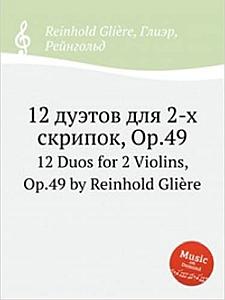
Glière – 12 Duos for 2 Violins
Support us for more FREE content No extra costs for you Recommended by Violinists
Henryk Wieniawski – Etude-Caprices for Two Violins, Op. 18
The dark, minor opening of the Etude-Caprices for Two Violins makes this piece instantly captivating. Each movement is bigger and bolder than the last, taking the performers and listeners for an enjoyable ride.
The first violin part is much more difficult than the second violin. While the second violinist plays many slow, low melodies, the first violinist has very high, fast arpeggios and ornamentation.
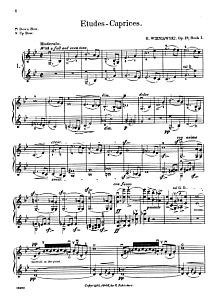
Wieniawski – Etude-Caprices for Two Violins
Sergei Prokofiev – Sonata for Two Violins, Op. 56
Prokofiev’s Sonata for Two Violins is one of the composer’s most romantic works, but that doesn’t make it any less difficult. Dissonant (not tonal) harmonies, frequent key signature changes, and tricky rhythms make the piece seem daunting.
At about the same difficulty level as Prokofiev’s other violin sonatas, each individual part is difficult and equally matched. Advanced double stops, fast-changing dynamics, and a high range make this an advanced, yet rewarding sonata for violinists to learn.
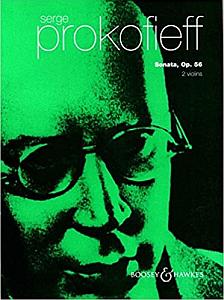
Prokofiev – Sonata for Two Violins
Support us for more FREE content No extra costs for you Recommended by Violinists
Eugène Ysaÿe – Sonata for Two Violins in A Minor, Op. posth.
Ysaÿe’s Sonata for Two Violins is a densely written, virtuosic piece. Late Romantic and impressionist, the music is very virtuosic. This sonata was published in 1915 after the composer’s death.
The work includes very tricky double stops, up-bow staccato, and harmonics. Both parts are extremely dramatic, and playing the duet requires advanced listening skills. The dense writing of the music makes this sonata sound like it’s being played by more instruments than just two violins.

Ysaÿe – Sonata for Two Violins in A Minor
Support us for more FREE content No extra costs for you Recommended by Violinists
Handel-Halvorsen – Passacaglia in G Minor
Originally for violin and viola, the Passacaglia is often nicknamed the “impossible duet.” The second part is often played by a cellist, but in the 1920s, Jascha Heifetz rearranged the piece for two violins. His version was only found and published just recently.
What makes this piece so difficult? Many, many double stops, difficult rhythms, and intricate parts that weave together. The second instrument part is just as difficult as the first, and both musicians need to be able to play staccato, pizzicato, ricochet, and scales.
Despite the difficulty, this is an entertaining and rewarding piece of music!
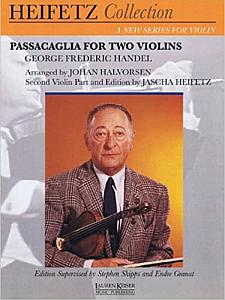
Handel-Halvorsen – Passacaglia in G Minor
Support us for more FREE content No extra costs for you Recommended by Violinists
Conclusion
No matter what level of violin you play, making music with others is a rewarding educational experience. There are so many opportunities for violinists to make music with others, and it’s a great way to make new friends and build existing friendships.
